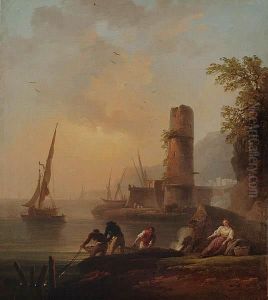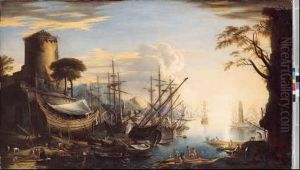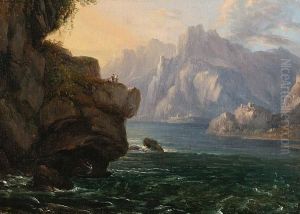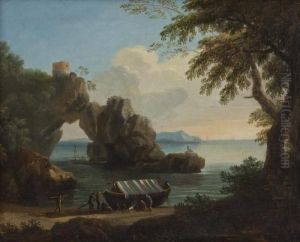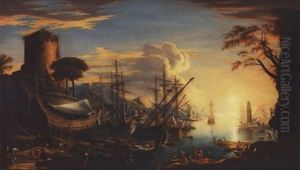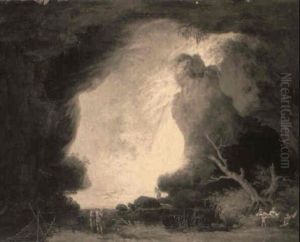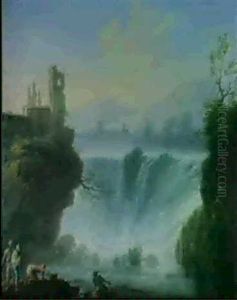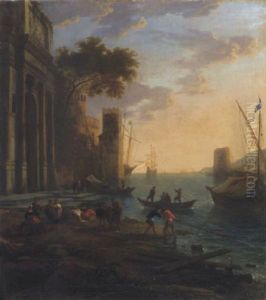Gregorio Fidanza Paintings
Gregorio Fidanza was an accomplished Italian painter, born in 1746 in the region of Lazio, Italy, and passed away in 1823. His artistic career was predominantly rooted in the late Baroque and early Neoclassicism periods, reflecting the transitional nature of European art during the 18th century. Fidanza's work is characterized by its detailed execution, vibrant color palette, and the incorporation of classical themes, which were increasingly popular among his contemporaries as they sought inspiration from the ancient past.
Fidanza received his initial training in the arts from his father, Lazzaro Fidanza, who was also a painter, albeit of lesser renown. This early exposure to the world of art deeply influenced Gregorio, setting the foundation for his lifelong dedication to painting. He further honed his skills in Rome, where he was exposed to the works of the great masters of the Renaissance and Baroque periods. It was during this time that Fidanza's style began to mature, reflecting a blend of his father's influence and his own evolving artistic vision.
Throughout his career, Fidanza was known for his versatility, producing works that included religious subjects, portraits, and landscapes. His religious paintings, in particular, were celebrated for their emotional depth and spiritual intensity, resonating with the devoutly Catholic populace of his time. Fidanza's landscapes, on the other hand, demonstrated his keen observation of nature and ability to capture the subtleties of light and shadow, a testament to his mastery of the Neoclassical style.
Despite his considerable talent, Gregorio Fidanza did not achieve the same level of fame as some of his contemporaries. Nevertheless, his contributions to Italian art have been recognized by historians and collectors alike. Today, his works are held in various collections and museums, serving as enduring examples of the artistic transition that characterized the late 18th and early 19th centuries in Italy.
In summary, Gregorio Fidanza was a pivotal figure in the Italian art scene of his time, bridging the gap between the Baroque and Neoclassical periods. His legacy is preserved through his diverse body of work, which continues to be appreciated for its beauty and historical significance.
